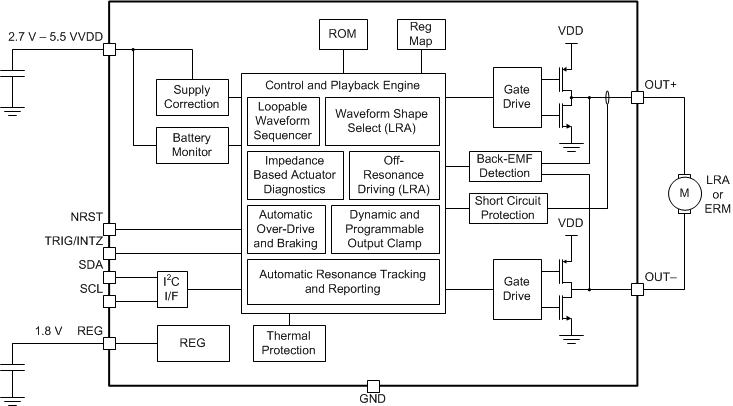SLOA188A October 2013 – November 2021 DRV2603 , DRV2604 , DRV2605 , DRV2605L-Q1 , DRV2624 , DRV2625
2 How Auto-Resonance Tracking Works
Auto-resonance tracking takes advantage of the back-EMF generated by an LRA to determine the resonant frequency. TI has characterized this back-EMF to determine how best to control the LRA frequency, vibration strength, and start and stop time.
 Figure 2-1 DRV2605 Block Diagram
Figure 2-1 DRV2605 Block Diagram Figure 2-2 DRV2625 Block Diagram
Figure 2-2 DRV2625 Block DiagramAuto-resonance tracking makes use of the electro-mechanical properties of an LRA. Inside the LRA, the back-EMF changes as the magnet moves closer or further away from the drive electrodes. This back-EMF signal is sensed on the output pins by the DRV2605 and DRV2625 every cycle and sent to the auto-resonance engine. The auto-resonance engine then determines the frequency.
If the frequency is too high, the DRV2605 and DRV2625 will reduce the output frequency, and if the frequency is too low, the DRV2605 and DRV2625 will increase the output frequency. This dynamic tracking will ensure more consistent vibration. Consistent vibration is much harder to achieve with a non-auto-resonance drivers, because the LRA resonant frequency can constantly vary as a result of manufacturing tolerances and environmental factors. Having real-time tracking of the resonant frequency is important to keep a strong, consistent vibration. DRV2604 and DRV2624 Behave identically with the exception of having internal RAM vs ROM which does not impact the auto-resonance feature.